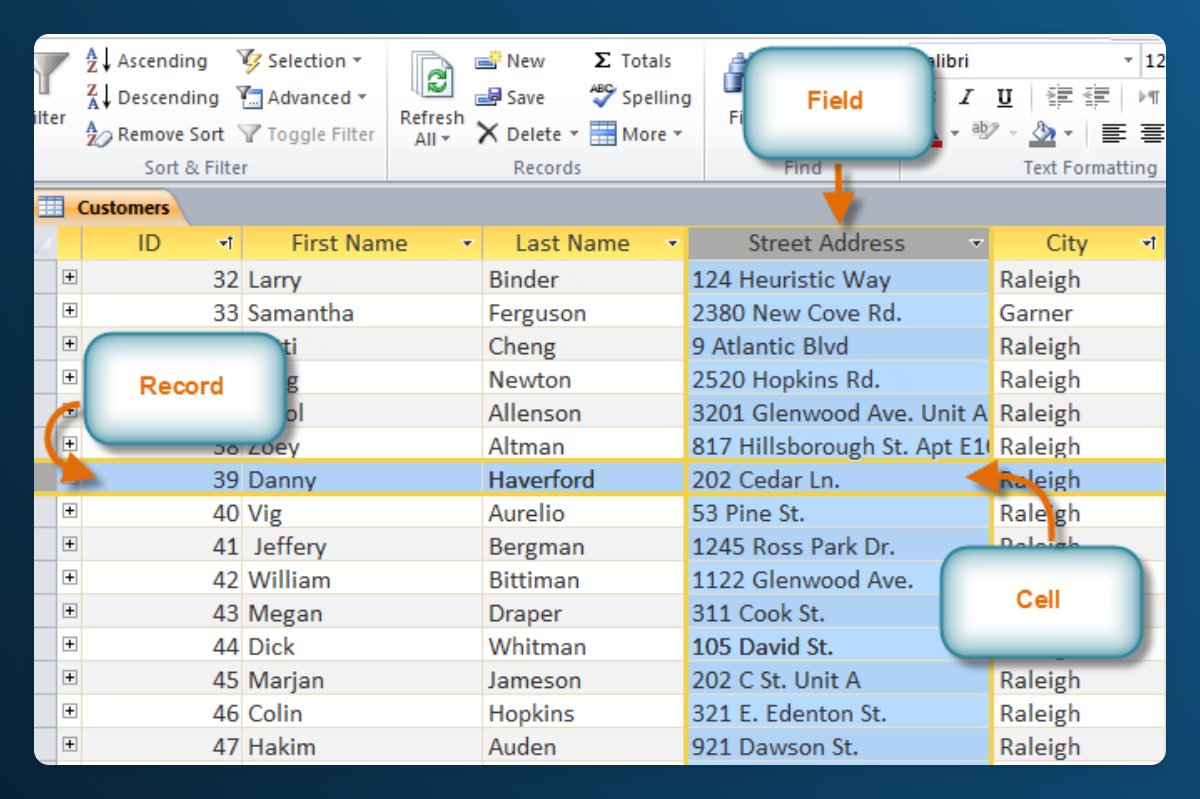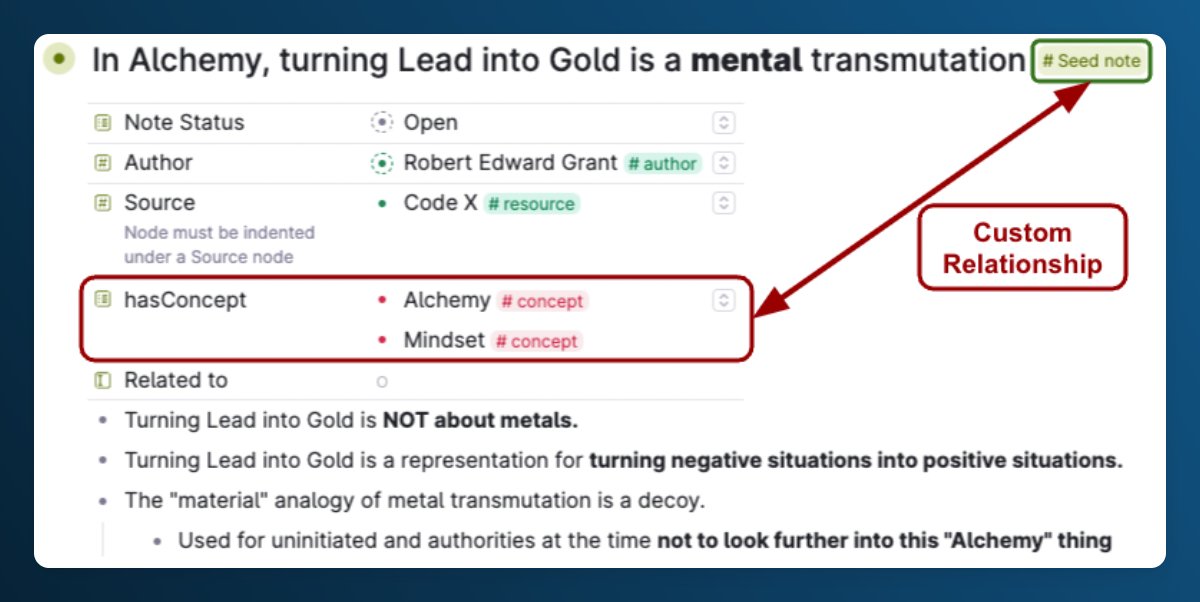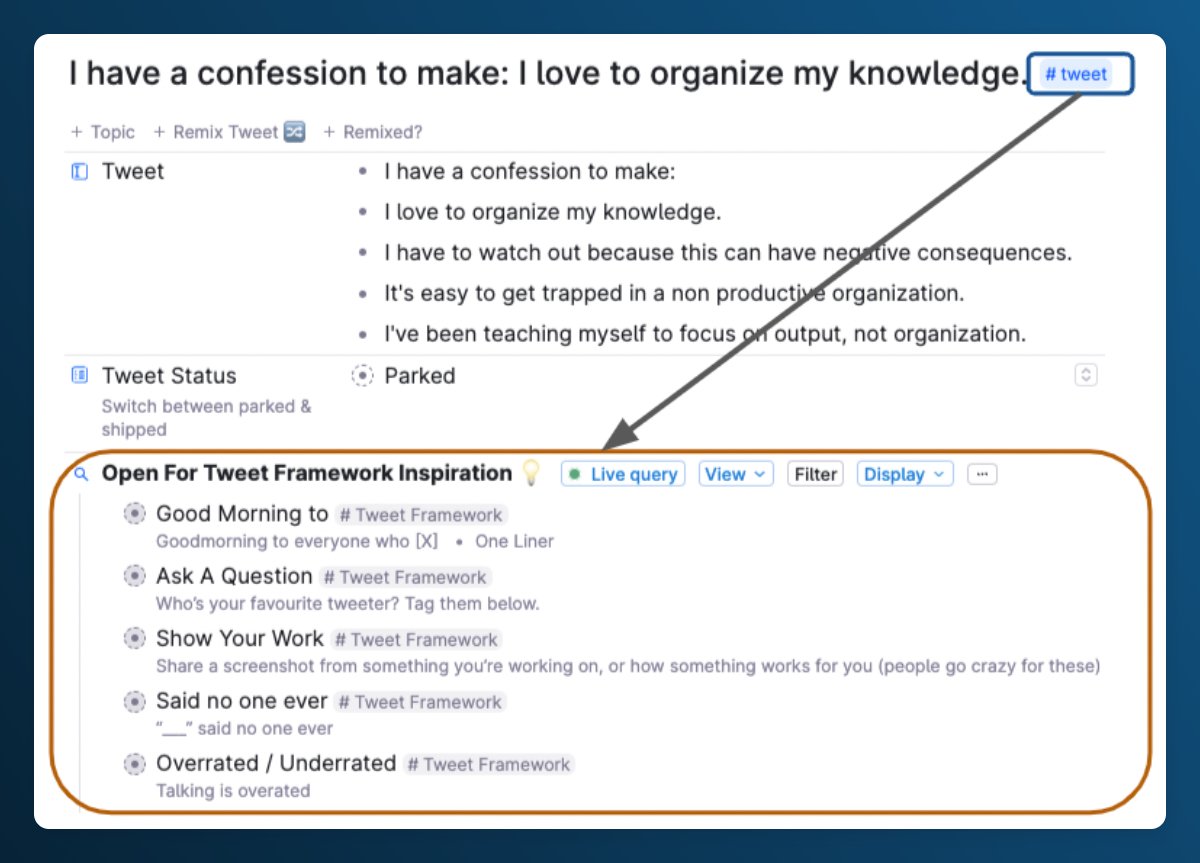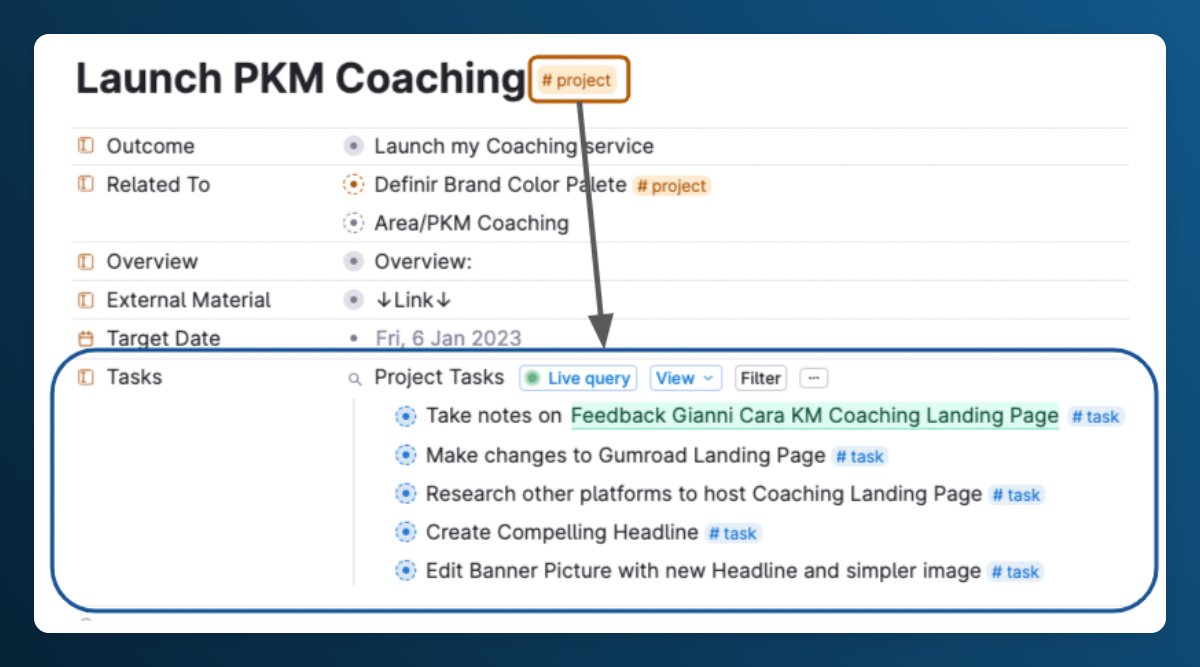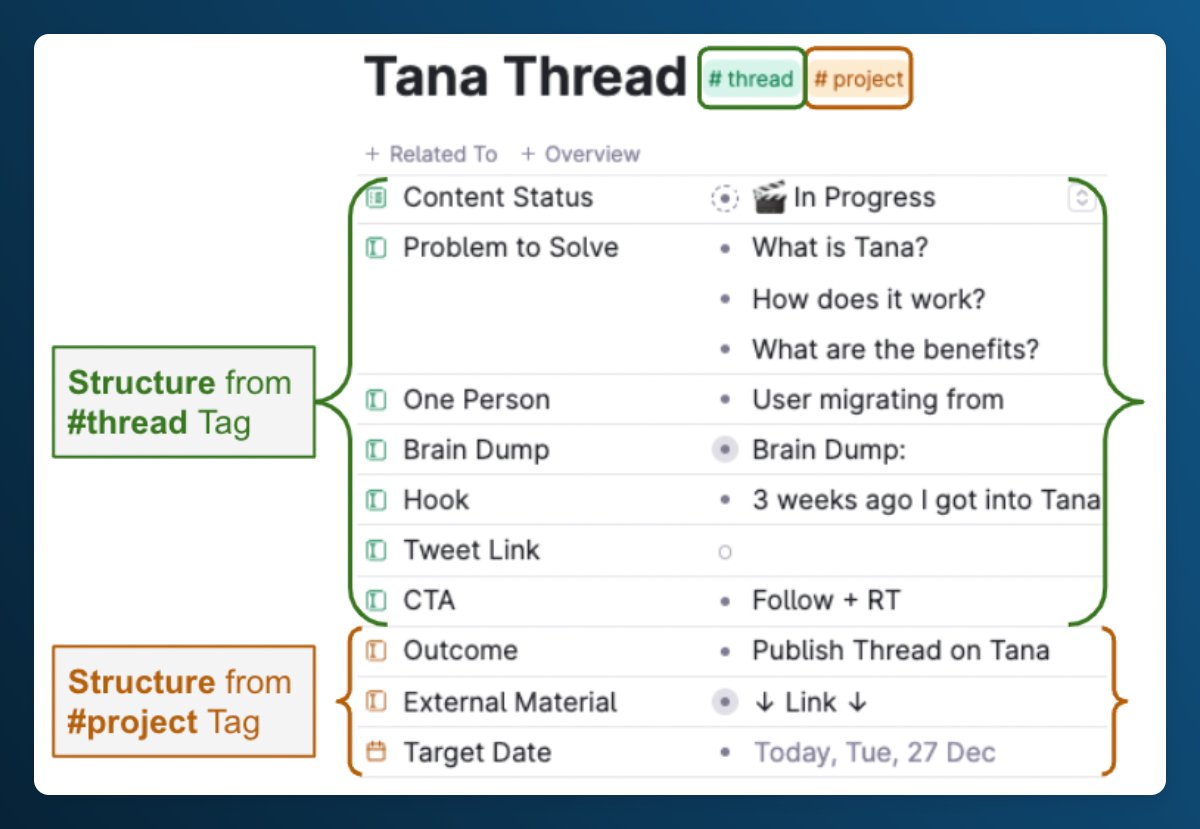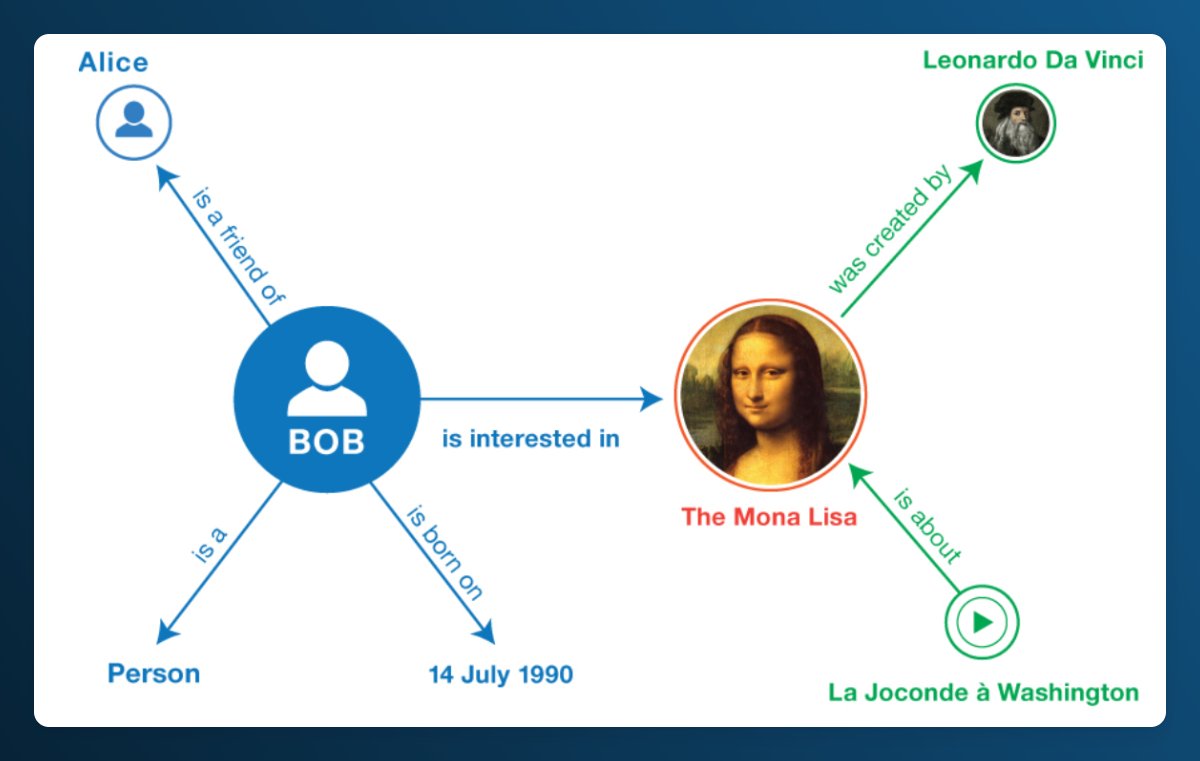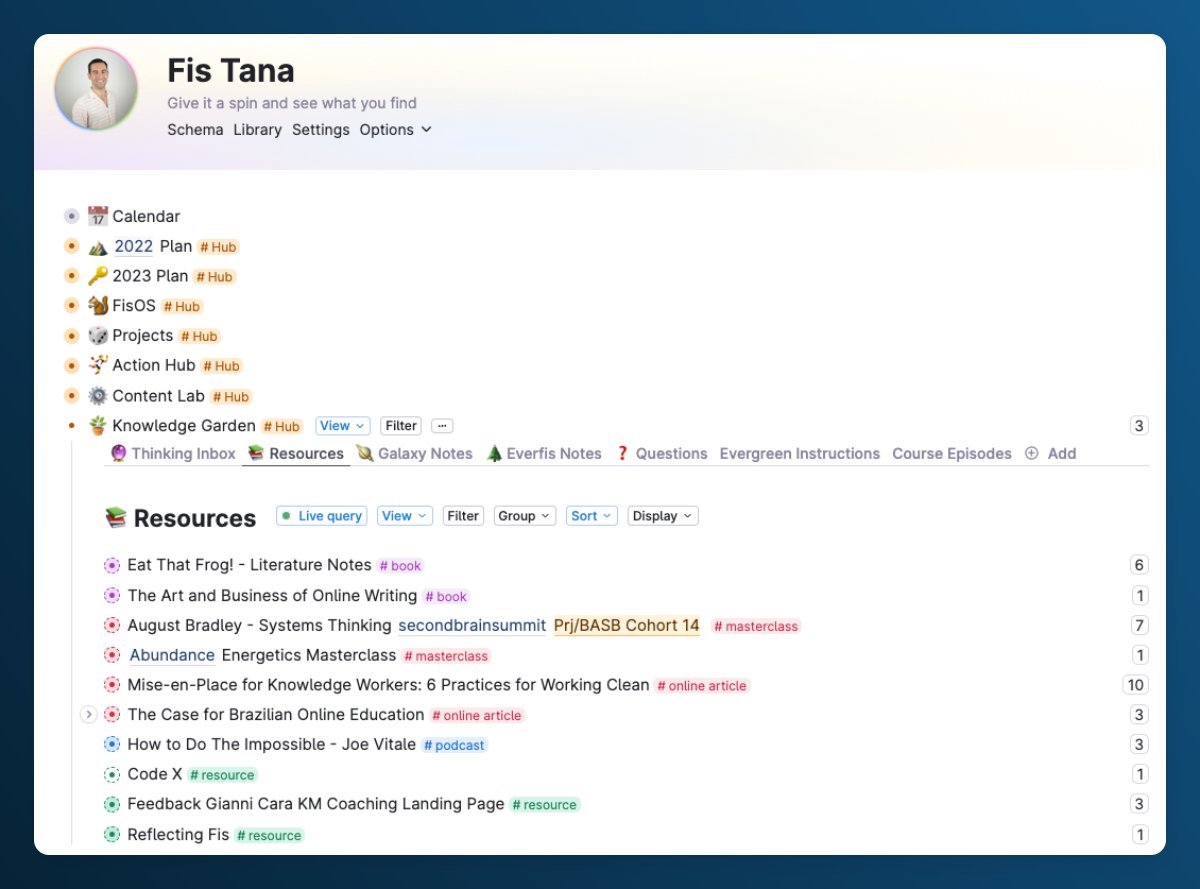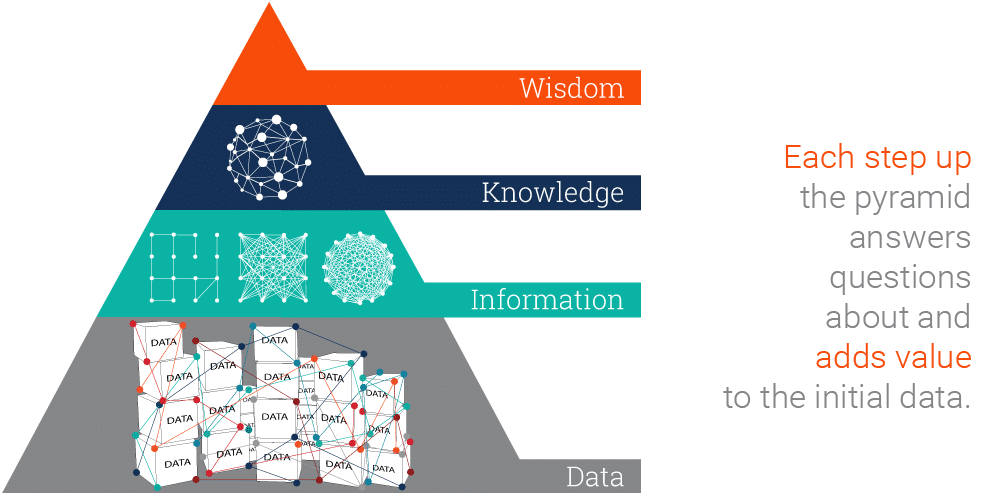Thread by Felipe Fraga | Knowledge Entrepreneur
- Tweet
- Dec 28, 2022
- #ComputerScience
Thread
3 weeks ago, I (finally) got into @tana_inc
Exactly 1 month after becoming a Master in Computer Science (focused on AI + NLP).
Trust me when I say this:
• Tana is State-of-the-art.
• It's like NOTHING you've seen before.
How Tana works + why it's overpowered:🧵
Exactly 1 month after becoming a Master in Computer Science (focused on AI + NLP).
Trust me when I say this:
• Tana is State-of-the-art.
• It's like NOTHING you've seen before.
How Tana works + why it's overpowered:🧵
If you are reading this:
🍪 You're in for a treat.
I'll take you on a journey to answer:
• What is Tana?
• Why is there nothing like it?
• Which features make it world-class?
↓ Let's begin ↓
🍪 You're in for a treat.
I'll take you on a journey to answer:
• What is Tana?
• Why is there nothing like it?
• Which features make it world-class?
↓ Let's begin ↓
Tana is a 🦸♂️ Super 🕸 Graph.
As @cortexfutura would say:
• "In Tana, Everything is a Node"
Allow me to take it one step further.
In Tana:
• "Everything can be a 🦸♂️Super Node"
• "You connect things with 🦸♂️Super Edges"
And what exactly are nodes and edges?↓
As @cortexfutura would say:
• "In Tana, Everything is a Node"
Allow me to take it one step further.
In Tana:
• "Everything can be a 🦸♂️Super Node"
• "You connect things with 🦸♂️Super Edges"
And what exactly are nodes and edges?↓
Nodes and Edges are core pieces of:
• Graphs 🕸
A Graph is a mathematical structure used in Information Science.
That models Networks & Relationships.
G = (V, E)
V = Vertices (nodes)
E = Edges (links)
• Nodes are points (intersections)
• Edges are links (relationships)
• Graphs 🕸
A Graph is a mathematical structure used in Information Science.
That models Networks & Relationships.
G = (V, E)
V = Vertices (nodes)
E = Edges (links)
• Nodes are points (intersections)
• Edges are links (relationships)
Tana provides Superpowers to Graphs.
Tana transforms:
• Nodes into Super Nodes
(using Supertags)
• Edges into Super Edges
(using Fields and Live Searches)
Let's dive deeper into these concepts ↓
Tana transforms:
• Nodes into Super Nodes
(using Supertags)
• Edges into Super Edges
(using Fields and Live Searches)
Let's dive deeper into these concepts ↓
Tana adds SuperTags to Nodes.
SuperTag = 🔖Tag + 🦸♂️Super
🔖 Tag = Label
Tags apply the "isA" relation to a Node:
• (Node X) "isA" (instance of class Y)
Tags indicate that a Node belongs to a certain class (category), just like a label.
Examples in the Graph above:
SuperTag = 🔖Tag + 🦸♂️Super
🔖 Tag = Label
Tags apply the "isA" relation to a Node:
• (Node X) "isA" (instance of class Y)
Tags indicate that a Node belongs to a certain class (category), just like a label.
Examples in the Graph above:
Now you're probably asking:
"What makes Tags become 🦸♂️Super?"
There are 4 major reasons:
1• SuperTags have Fields (SuperEdges)
2• Fields can have user-defined relations
3• SuperTags automatically surface info
4• Nodes inherit structure from Tags
Let's break them down↓
"What makes Tags become 🦸♂️Super?"
There are 4 major reasons:
1• SuperTags have Fields (SuperEdges)
2• Fields can have user-defined relations
3• SuperTags automatically surface info
4• Nodes inherit structure from Tags
Let's break them down↓
1• SuperTags have "Fields" (SuperEdges)
Fields = Attributes = Variables = hasA
Fields are like Columns in an Excel Table
• Fields add information
• Fields store relationships
• Fields represent characteristics
(Fields in Tana are much more complex than Excel Tables)
Fields = Attributes = Variables = hasA
Fields are like Columns in an Excel Table
• Fields add information
• Fields store relationships
• Fields represent characteristics
(Fields in Tana are much more complex than Excel Tables)
2• Fields can have user-defined relations
In Tana, field instances can be defined as belonging to a class (Supertag).
This creates:
• Custom relationship between classes
See example below:
Seed Note has a custom relationship called "hasConcept"
That Links to Concept Nodes
In Tana, field instances can be defined as belonging to a class (Supertag).
This creates:
• Custom relationship between classes
See example below:
Seed Note has a custom relationship called "hasConcept"
That Links to Concept Nodes
3 • SuperTags automatically surface info
In Tana, Tags bring you information.
Tags will Search, Compute, + Show data from anywhere in your Tana workspace.
Ex:
• Fields to help you remember Frameworks
• Live Searches to grab info from other Tag
In Tana, Tags bring you information.
Tags will Search, Compute, + Show data from anywhere in your Tana workspace.
Ex:
• Fields to help you remember Frameworks
• Live Searches to grab info from other Tag
4 • Nodes inherit structure from Tags
In Tana, you pre-define a Tag's structure with Fields and Information.
For every Tag that you add to a Node,
The Node will:
• Inherit the Tag's structure
• Show info surfaced by the Tag
(Including multiple tags – see example↓)
In Tana, you pre-define a Tag's structure with Fields and Information.
For every Tag that you add to a Node,
The Node will:
• Inherit the Tag's structure
• Show info surfaced by the Tag
(Including multiple tags – see example↓)
Data moves fluidly through Tana's veins.
These reasons make Tana ELITE for:
📍Discoverability
📍Flexibility
• Discoverability (Retrieval) is a CORE aspect of PKM.
• Flexibility is what makes PKM "Personal"
Here's why Tana is great at these.
First, Discoverability: ↓
These reasons make Tana ELITE for:
📍Discoverability
📍Flexibility
• Discoverability (Retrieval) is a CORE aspect of PKM.
• Flexibility is what makes PKM "Personal"
Here's why Tana is great at these.
First, Discoverability: ↓
Knowledge Management has 4 processes (Alavi & Leidner, 2001):
1. Creation
2. Storage and Retrieval
3. Transfer
4. Application
Retrieval is usually the hardest.
Tana DOES IT for you:
• WHAT you want
• In Multiple Formats
• Updated Automatically
• WHERE you'll "apply" it
1. Creation
2. Storage and Retrieval
3. Transfer
4. Application
Retrieval is usually the hardest.
Tana DOES IT for you:
• WHAT you want
• In Multiple Formats
• Updated Automatically
• WHERE you'll "apply" it
Tana is also elite in Flexibility:
It's a TRUE "Personal" Knowledge Graph.
A Knowledge Graph (KG) is a Graph with special abilities.
KGs store descriptions and linked semantic relationships between:
• Entities
• Objects
• Events
• Abstract Concepts
Tana makes it Personal
It's a TRUE "Personal" Knowledge Graph.
A Knowledge Graph (KG) is a Graph with special abilities.
KGs store descriptions and linked semantic relationships between:
• Entities
• Objects
• Events
• Abstract Concepts
Tana makes it Personal
In Tana, you create your own Ontology.
Ontology = the language (structure) of a KG
Ontology = Schema in Tana
• What types of Entities exist
• What Relationships exist
• Between which Entities
• In what Hierarchy
In Tana, you can represent anything
Ontology = the language (structure) of a KG
Ontology = Schema in Tana
• What types of Entities exist
• What Relationships exist
• Between which Entities
• In what Hierarchy
In Tana, you can represent anything
Tana being so Flexible + Personal makes it state-of-the-art for:
• Action Management
• Personal Development
• Knowledge Management
No other tool has a very-high-quality service for as many use cases.
Tana is a juggernaut for personal systems (while still in private Beta)
• Action Management
• Personal Development
• Knowledge Management
No other tool has a very-high-quality service for as many use cases.
Tana is a juggernaut for personal systems (while still in private Beta)
The 🍒 cherry on top:
Tana's data structure:
- Daily Node
- Root Node
- Supertags
- Schema
- Library
- Search
- Filters
- Fields
- Views
- Tabs
Makes it perfect to create:
• "Working Hubs"
Inside your Root Node:
YOU ONLY STRUCTURE WHAT MATTERS.
The rest is highly flexible.
Tana's data structure:
- Daily Node
- Root Node
- Supertags
- Schema
- Library
- Search
- Filters
- Fields
- Views
- Tabs
Makes it perfect to create:
• "Working Hubs"
Inside your Root Node:
YOU ONLY STRUCTURE WHAT MATTERS.
The rest is highly flexible.
Thank you very much for reading thus far.
I want to end this thread with a small reflection for you.
It's regarding the DIKW (WKID) Pyramid.
• Wisdom
• Knowledge
• Information
• Data
As Knowledge workers, we're always moving up this pyramid ↓
I want to end this thread with a small reflection for you.
It's regarding the DIKW (WKID) Pyramid.
• Wisdom
• Knowledge
• Information
• Data
As Knowledge workers, we're always moving up this pyramid ↓
Now think about this:
• A Computer structures Data
• Word and Excel structure Information
• A TfT structures Knowledge
• The Human Mind structures Wisdom
@tana_inc is state-of-the-art to structure knowledge.
But it's your Wisdom that matters.
Let's get Wiser with Tana.
• A Computer structures Data
• Word and Excel structure Information
• A TfT structures Knowledge
• The Human Mind structures Wisdom
@tana_inc is state-of-the-art to structure knowledge.
But it's your Wisdom that matters.
Let's get Wiser with Tana.
Again, Thank you for your time!
I hope you enjoyed this thread.
And you have access to Tana 😅
If you did like this thread, I have a simple request for you:
• Follow me for more Tana Tips
• RT the first tweet to share with friends
Happy Holidays ❤️🔥
I hope you enjoyed this thread.
And you have access to Tana 😅
If you did like this thread, I have a simple request for you:
• Follow me for more Tana Tips
• RT the first tweet to share with friends
Happy Holidays ❤️🔥
Mentions
See All
Tiago Forte @fortelabs
·
Jan 5, 2023
Best thread I’ve seen so far to understand @tana_inc 👇 TLDR: it’s a graph of semantic relationships between pieces of data that can be modified from any direction and starting at any node, adding structure only as needed according to your needs in any given moment


